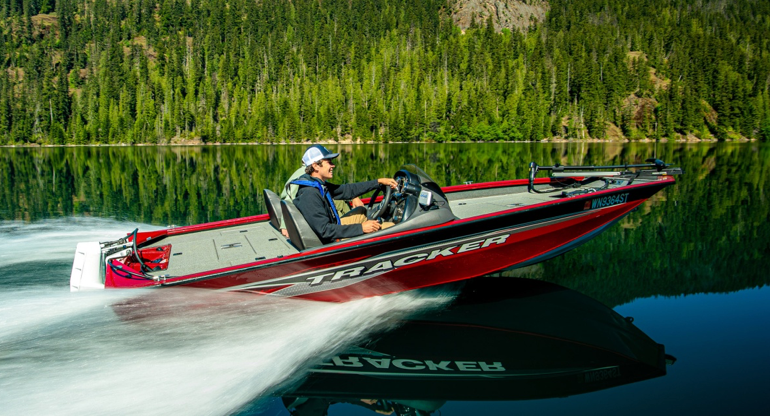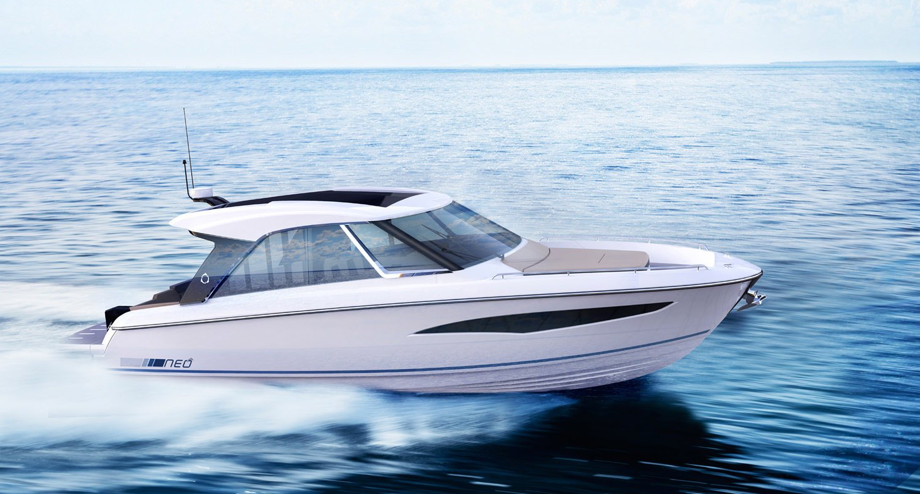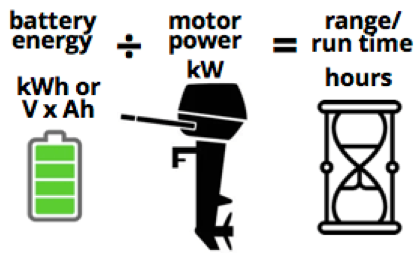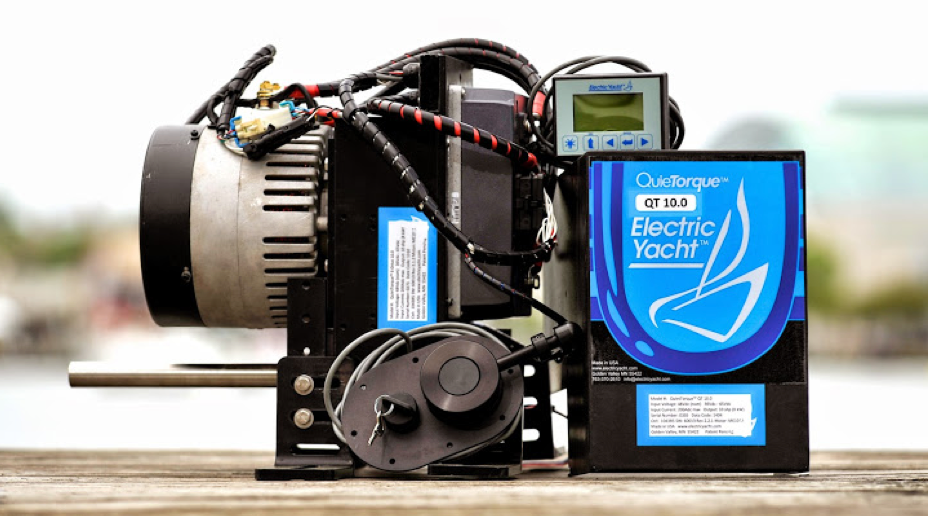About Electric Propulsion, Part 4: Power and Range — kiloWatts, kiloWatt hours, Amp hours

Continuing the Tutorial on Electrical Propulsion for Boats.
One of the nicest things about working in kiloWatts as the common measurement of both electric and mechanical energy is that it makes it easy to figure out much energy is required to keep your boat moving and how far it can go at what speed without recharging.
Calculating Your Range
With an understanding of kiloWatt hours and Amp hours, you can easily calculate that range.
kiloWatts, kiloWatt hours, Amp hours
The thing you want to know about your battery to make the range calculation is how many kiloWatt hours it has.
Note Carefully: kiloWatt hours, Not kiloWatts. KiloWatt hours are denoted as kWh.
The difference between kiloWatts and kiloWatt hours is important. A kiloWatt is a measurement of power, as we know. But a kiloWatt HOUR is a measure of energy.
How can that be? Let’s return to that other measurement of energy, the joule, for a minute.

We learned that a kiloWatt is the work that one thousand joules can do in one second and it follows that a kiloWatt Hour is how much work 1,000 joules per second can do in 1 hour – 3,600 seconds.
It is a measurement of energy because it tells us the number of units of energy being transferred in one hour to do the work: 1,000 joules per second x 3,600 seconds in an hour = 3,600,000 joules of energy converted to work in an hour.

This makes it easy to know how long the energy in your battery can supply an accompanying motor. Simply divide the battery’s kiloWatt hour capacity by the motor’s kiloWatt power rating. A 10 kiloWatt motor – running flat out the whole time – needs 10 kiloWatts of electrical power each second and will use 10 kiloWatt hours of energy in 1 hour.
In other words, it will draw 3.6M joules of electrical energy out of the battery in an hour, when running at ‘wide open throttle’, to use a fossil fuel term.
Like any boat motor, though, a 10kW motor does not need to go at full speed and use all the peak power all the time. At half speed it needs 5kW, at one-quarter speed it needs 2.5kW, etc.
That’s the good news about the calculation. The bad news is that not every battery manufacturer provides a specification for kiloWatt hours. Some do, some don’t.
However, almost all battery manufacturers provide a specification for Amp hours, designated as Ah.

You can still easily figure out the energy storage using amp hours, though. Just adapt the Volts x Amps = Watts equation to say Volts X Amp Hours = Watt Hours. (Be careful when calculating — the answer is in watt hours, not kiloWatt hours.)
Since amps are a measurement of how much electricity is flowing past a single point in the wire at any one time, an amp hour is how much flows past in an hour, how much energy is coming out of the battery.

Using our same 10 kiloWatt motor, it is going to use 10,000 watts in an hour (flat out), so with a 48V battery, we will need a specification of about 200 amp hours: 48V x 200Ah = 9,600 watt hours, which is just less than 10 kiloWatt hours. We can go at top speed for 1 hour, half speed for 2 hours, and quarter speed for 4 hours.
Bottom line is that estimating range with electrical power is just as easy as estimating range with internal combustion engines: Know how much fuel — or charge — you have, your energy use at a given speed (as with your mpg or gph with internal combustion engines) and the rest comes easy.